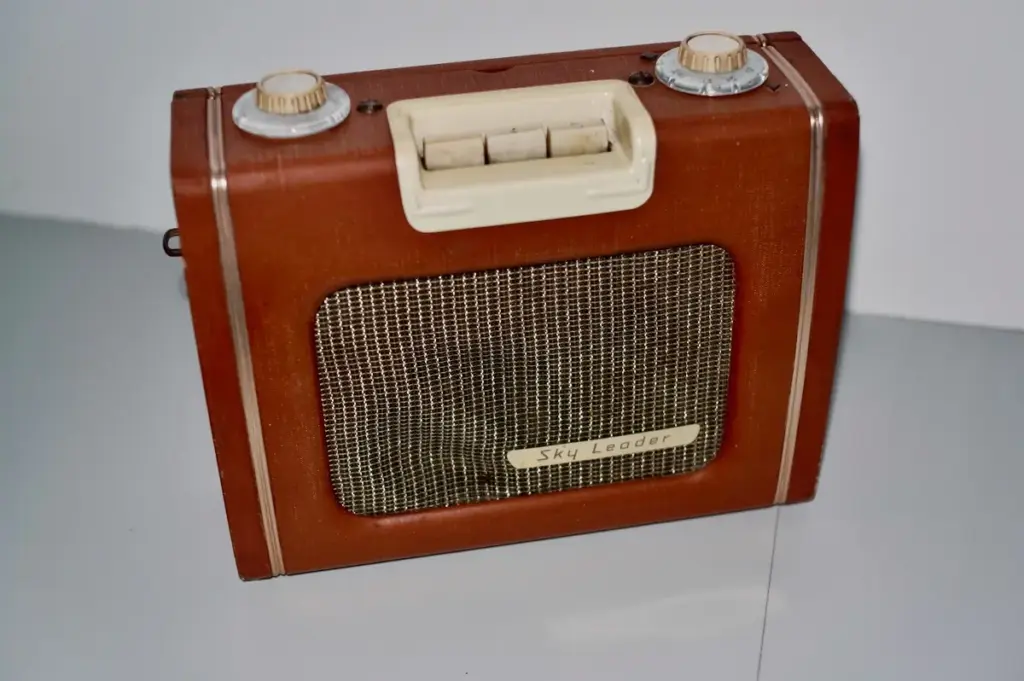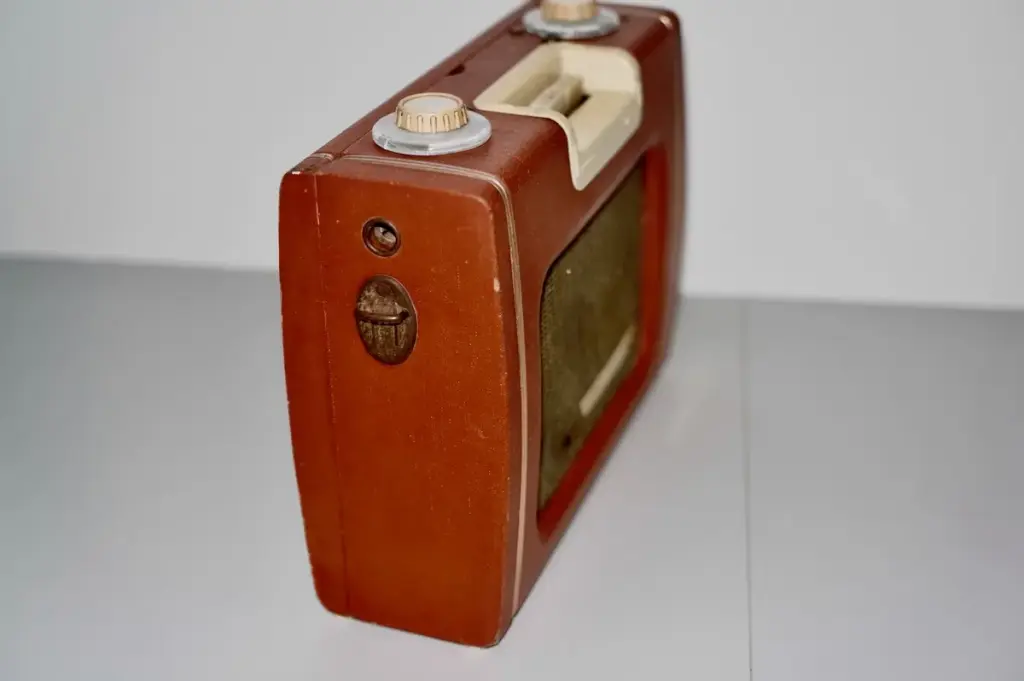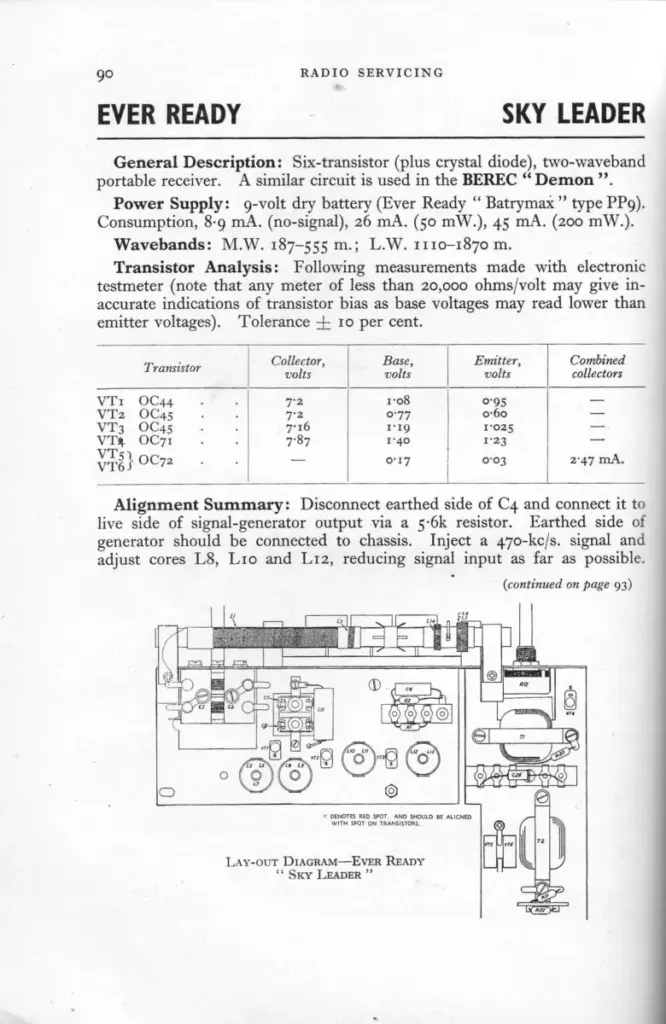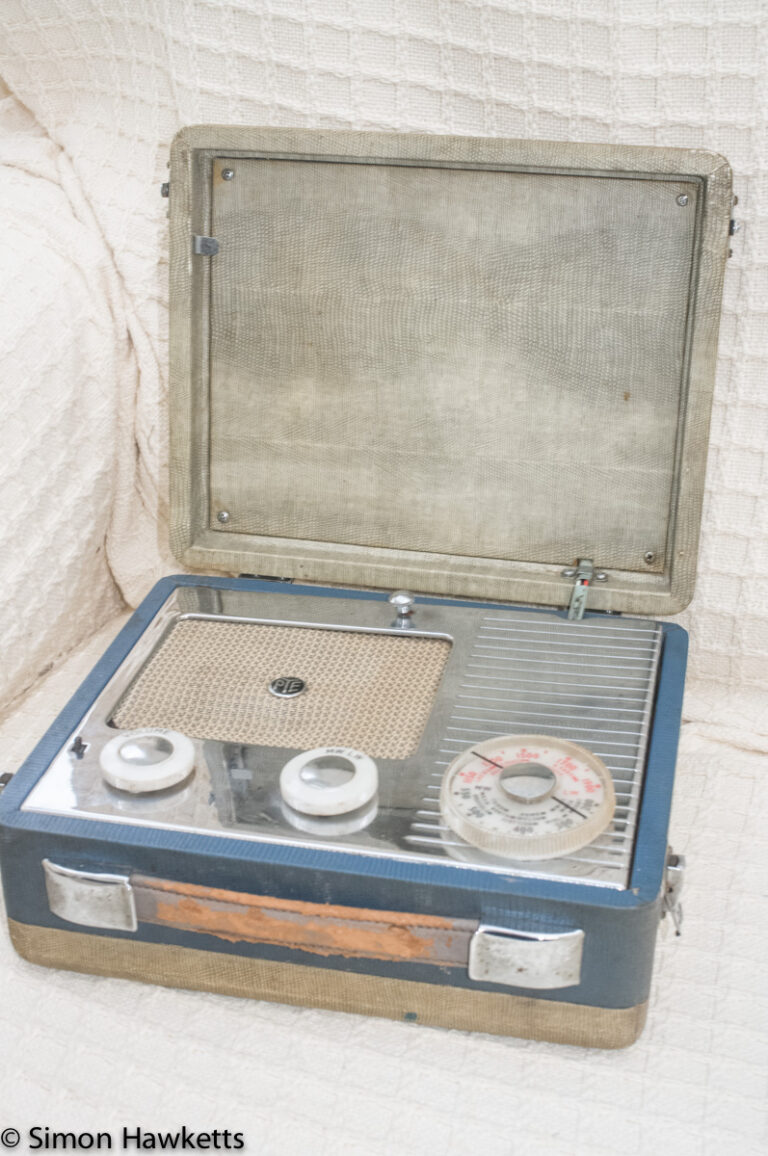The Popular Ever Ready Sky Leader transistor radio from 1958
The Ever Ready Sky Leader was one of the first transistor radio sets designed and sold by the Ever Ready company in the UK. It was made from the late 1950s and joined a number of sets which all had the word ‘Sky’ in their name.
My Ever Ready Sky Leader radio
I bought my example of the Sky Leader from eBay for a few pounds and at the time I bought it there were about 8 other examples I could have purchased instead. It was obviously a popular model and many thousands must have been made because they are very easy to pick up on the second hand market.
Mine was sold as untested, which on eBay can mean a variety of things from literally untested, to ‘this is junk’. As it turns out, my seller was probably being truthful and hadn’t tested it, because if they had it would probably have been sold as, ‘fully working’ since I found when I connected a battery it sprang to life.

It isn’t actually fully working, as in working as it would have done when first made, because the volume control is crackly and noisy when turned, but that’s sort of to be expected for a set this old and quite easy to fix with a squirt of switch cleaner.
The most noticeable thing about my example was the dirt that was ingrained into every part of the set. It looked as it it probably hadn’t had a clean since it was made (which could very well be the case) but since there didn’t seem to be any damage to the covering or the plastic parts I found it cleaned up pretty well. The image here shows the case material after I’d started cleaning around the tuning control (with the knob off), and shows it responding well to a damp cloth.
The other sign of age with my radio is the lack of markings. The dials on the two knobs are losing the numbers and symbols and the markings on the buttons are completely gone. This again is not unexpected and it may be repairable with some paint or transfers. Also, like many units available on the second hand market, my radio is missing the leather strap that allowed it to be carried around.
My model seems to have a non standard addition to the back of the radio in the way of an external power socket. That doesn’t seem to be in the circuit diagram and I don’t see it on any other sets when I’ve done an image search, so it looks like a home mod. Also, the fact that there is no metal bezel round the hole adds weight to this argument.
This radio brings my collection of radios made by Ever Ready to two since it adds to the Ever Ready type C I’ve already featured on Everything Vintage.
Pictures of the Ever Ready Sky Leader transistor radio set
- The Ever Ready Sky Leader
- Side view showing aerial socket
- Rear view of set
- Top view showing controls
- Internal view of set
- The Sky Leader badge
Description of the Sky Leader
The Ever Ready Sky Leader is a two waveband, transistorised, battery powered radio that could be used in the home or could be taken on trips to provide entertainment on the go. It was made in a variety of colours – red like the one featured here, and I’ve certainly seen examples in blue and green, but there may have been other colours as well.
The design is a conventional superhet which uses 6 transistors and 1 germanium diode. The good news is that the transistor set used is the OC series, OC44 & OC45 in the RF/IF sections and then OC70 and OC71 in the audio stages. This is good because that transistor set seems much less prone to the issues that cause failures in the AF117 series of transistors which were also commonly used in radios of this vintage.
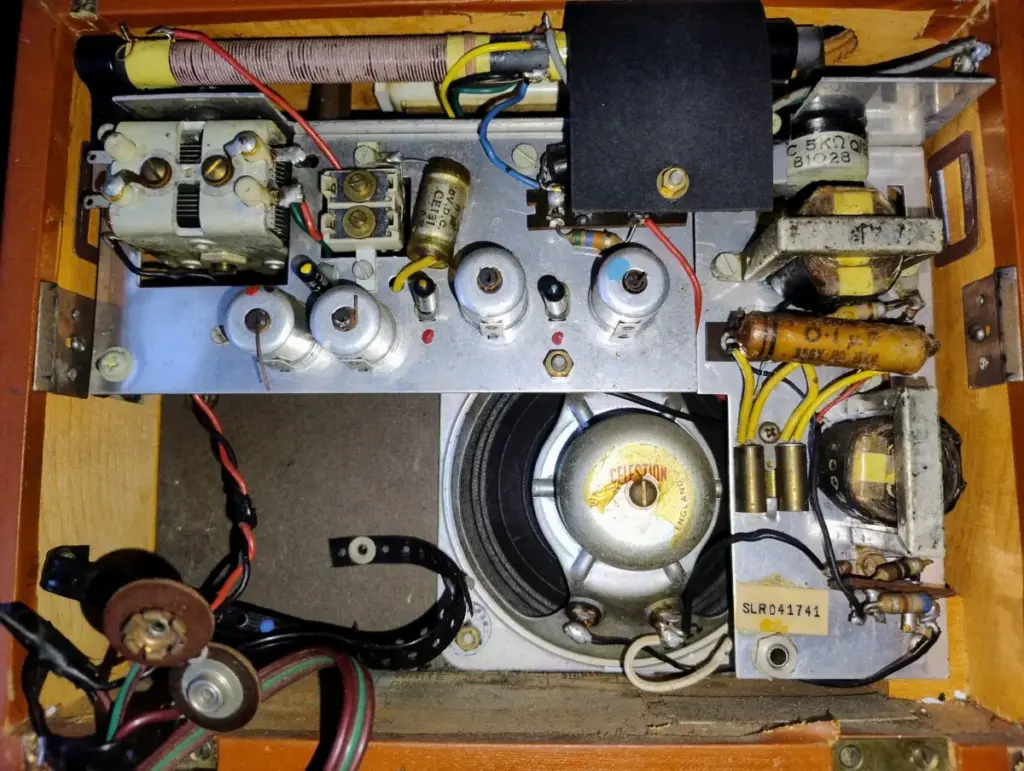
Something I find interesting in transistor sets of this age is the techniques used during their manufacture. The sets are still constructed very much like the valve sets that they replaced a few years before, with metal chassis and the transistors mounted above the chassis and the other components below.
Within a few years, this would be replaced by PCBs and soon after with ICs populating the PCBs but sets of this age are particularly easy to work on because everything can be easily got at.
The layout of the Sky Leader can be seen in the picture here. The ferrite rod aerial is at the top of the set with the RF/IF stage mounted below it. To the right is the audio stage with the pair of output transistors mounted in a heatsink next to the output transformer. The speaker is mounted behind both chassis on the front panel.
The case of the set is made wood and then covered in a leatherette style material.
The controls are very simple. There is a set of buttons which select either Medium Wave / Long Wave or Off and then there is a volume control and a tuning knob.
Although it is missing from my radio, there were originally marks on the band selection buttons of a square and a triangle, and these correspond with marks around the tuning dial to show which scale applies.
The tuning knob has a reduction control which makes fine tuning the set easier. There are no station markings on the dial, just 2,3,4,5 on the Medium Wave side (for 200M, 300M, 400M & 500M) and then 13,15,17 on the Long Wave side (for 1200M, 1500M and 1700M).
The set runs from a single 9V battery which can still be bought, but is very expensive (about £20 on amazon), so I’m going to fit an adapter to use 6 AA cells in my unit so I can get it working.
Circuit Diagram and Info
Below are the relevant pages from the Radio & TV servicing manual for 1958/59 which shows the circuit and the technical data for the radio.
Ever Ready Sky Leader specifications
- Sky Leader radio set made about 1958
- Covers Medium Wave (187 – 555M) and Long wave (1110 – 1870M)
- Uses 6 germanium transistors and 1 germanium diode
- Powered from a single PP9 9v battery
- Can be used in the home or carried about
- Supplied with carrying strap
- Available in multiple colours
Discover more from Everything Vintage
Subscribe to get the latest posts sent to your email.


